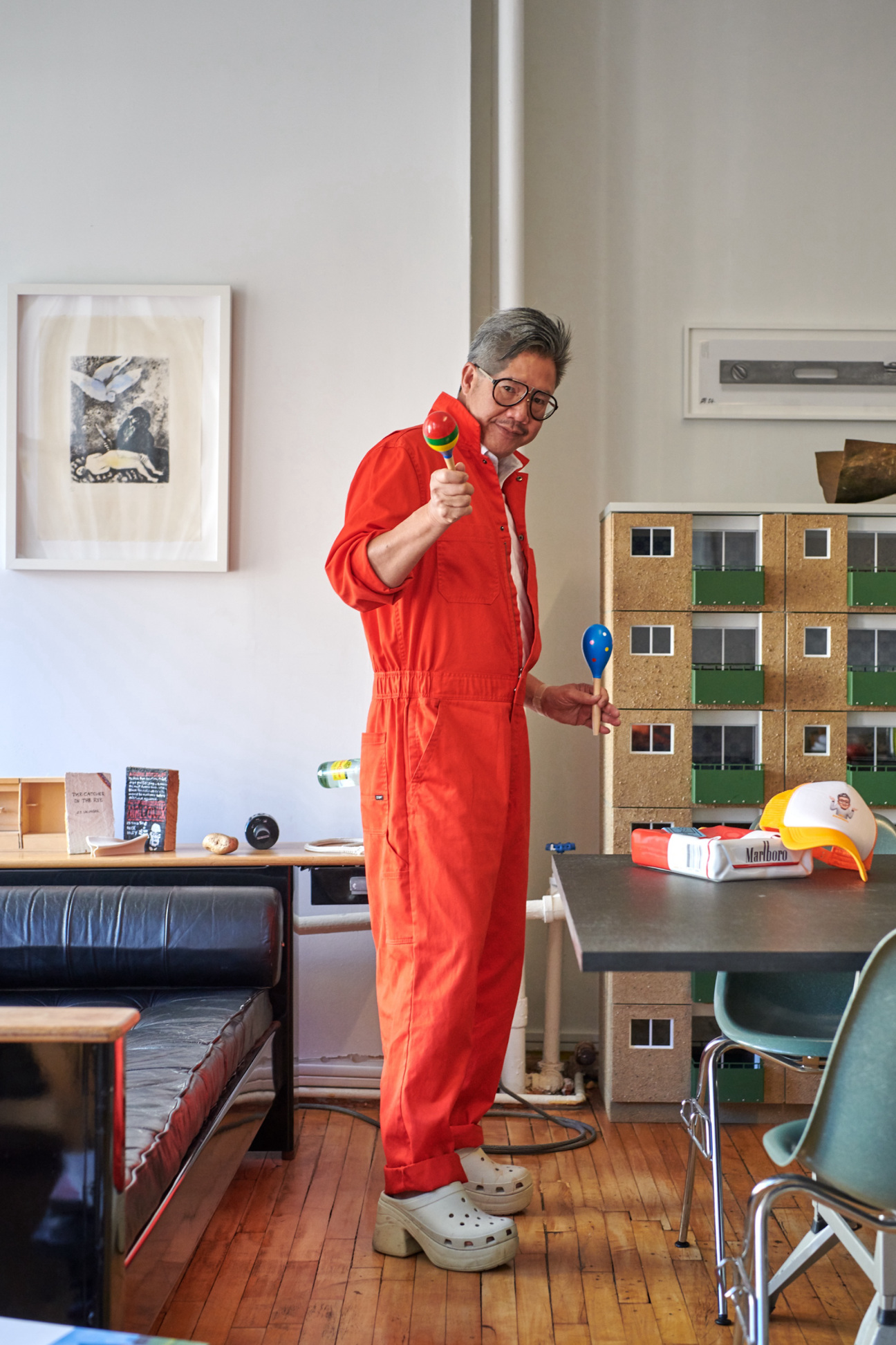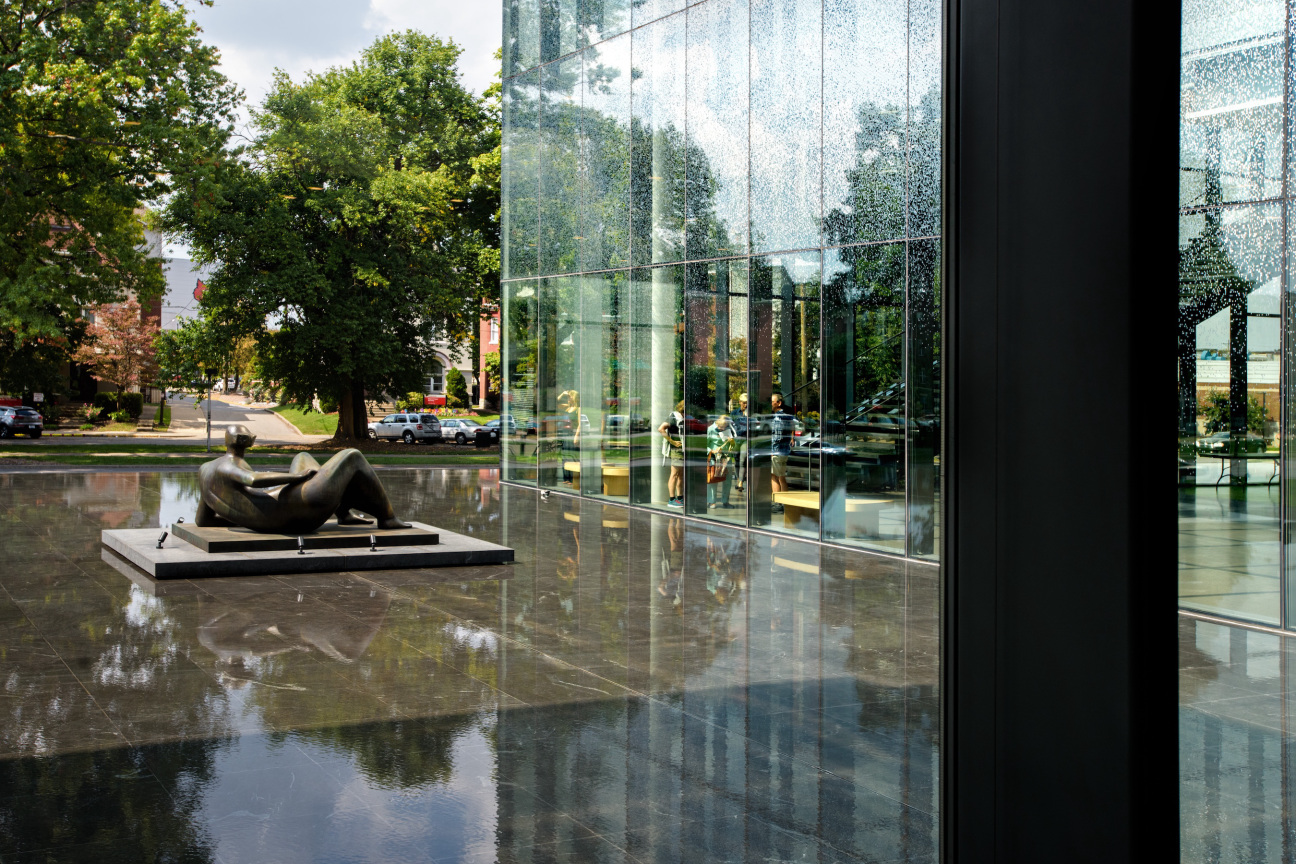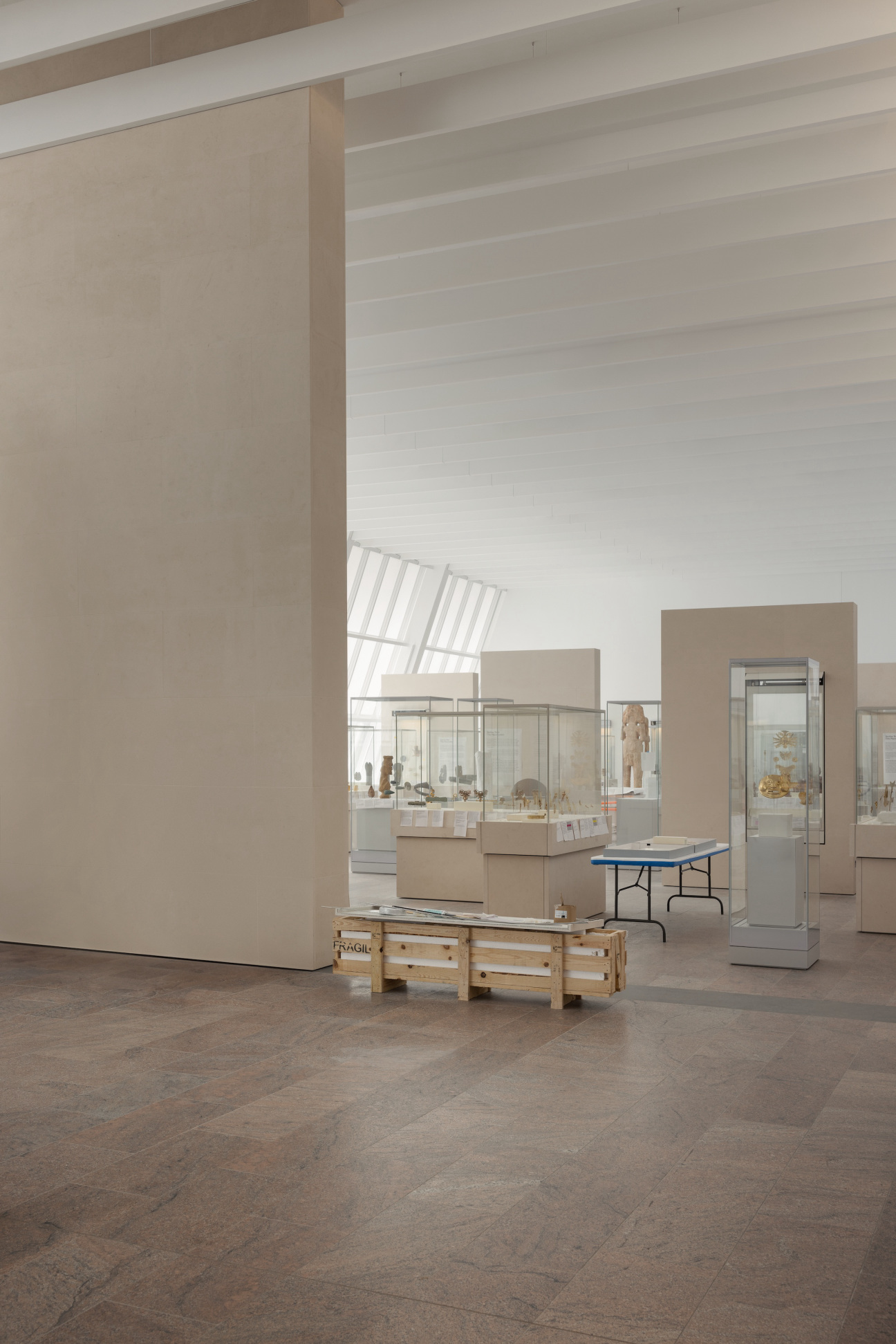
CULTURED’s monthly column, Spatial Awareness, is meant to pull back the curtain (just a little) on some of the most original voices working in architecture today.
Like the polymath musician David Byrne, architect Kulapat Yantrasast knows how to rock a jumpsuit. He’s unmissable in a crowd, sporting a black, gray, or bright red flight suit paired with his other calling card: platform clogs. Fashion is an easy way to begin a dialogue around aesthetics, and indeed, the art of conversation is one of Yantrasast’s many strengths.
Born in Bangkok, educated in Tokyo, and trained at the office of Pritzker Prize-winning Japanese architect Tadao Ando, he arrived in Los Angeles in 2003 to set up his architectural office WHY. In the ensuing two decades, he expanded his practice with studios in New York and Tokyo. Like many architects of his stature, he is never able to sit still, always chasing the next project. One constant, however, is his passion for art and the spaces where it is shown. He wears the moniker of an art collector lightly (although he lives with work by the likes of Gabriel Orozco, Shiro Kuramata, and Magdalena Suarez Frimkess). Instead, he pivots to his role as a matchmaker between art and people, a metaphor for the unique spaces he designs to promote a conversation between say a sculpture and its observer about light and the void.
Yantrasast embraces the challenge of the renovation—to remix and redefine spaces so they speak to the collections they hold and make art more accessible to the public. Too often, a refurbishment or addition is considered a second-class citizen to a new build that enables an architect to express their intentions (aka ego) in a spectacular fashion. Sometimes, the more challenging task is to breathe dynamic energy into outdated buildings, engineering a thoughtful dialogue between the old and the new.

Yantrasast has a remarkable track record of doing just that while deftly navigating byzantine layers of bureaucracy, including the various (and sometimes contradictory) wants and desires of curators, board members, educators, and directors. His museum projects include expansions and renovations of the Art Institute of Chicago, Harvard University, the Louvre, the Marciano Foundation, the Speed Art Museum, and the Metropolitan Museum of Art.
His overhaul of the Met’s Michael C. Rockefeller Wing will open in May 2025. Given its stellar reputation, any project with the Met is fraught with expectations. Redesigning the galleries of objects and art for Africa, the Ancient Americas, and Oceania is undoubtedly the case where history is filtered through a heightened global lens, and audiences demand their museum experiences to be immersive. The 40,000-square-foot wing will be a completely new reading of the collections by mining the architectural vernacular of where the works originated providing a historical context. And with a PhD in Architecture, Yantrasast can joust with the best.

Yet he remains frustrated by how the industry is pigeonholed as a functional service provider rather than a thought partner. Yantrasast compares the current state of most architectural practices to making a dress. He explains: “Clients come to architects with a detailed scope of work that includes square footage, number of rooms delineated by function—essentially the ‘why’ and the ‘what’ is answered, and we work on the 'how.' The last step to ‘dress’ it all up. With our skill sets and experience, we should be at the beginning of the conversation—to help define and perhaps even reimagine the brief with them.”
Always future-focused, Yantrasast looks to Japan as a new canvas for disruption. He has had a long love affair with the country and counts Ando as his most influential mentor. The rub is that while Japan is all about the omakase—a highly controlled, beautifully crafted meal—this Thai architect is ready to insert the energy of the Bangkok supper club. “Let’s get a little messy, a little dirty,” he says. “Why not?”

IN HIS OWN WORDS
What was your favorite toy growing up?
Colored clay.
Whose house would you live in (real or fictional) and why?
I’d like to live in Howl’s Moving Castle because I love magic and compassion. [Howl's Moving Castle is a 2004 Japanese animated fantasy film written and directed by Hayao Miyazaki.]
What is your go-to uniform when you're powering through a project?
Jumpsuits always—a bright red one signifying alert time.
Who chooses the playlist in your studio?
We rotate—normally someone who feels strong urges about certain moods; maybe it’s [someone who is] just back from vacation, going to a DJ gig, or prepping for Burning Man.
What’s a trend in architecture you wish would die out?
Decorated diagrams for developers!
What is one detail of a structure that most people wouldn't notice, but that you always look to for insight?
Reveals—how floors touch walls and walls touch roofs.
Are there any analog materials you return to in spite of the prevalence of new technologies?
Concrete—all day, all night.
What is the most progressive architectural city you’ve visited?
Tokyo.
What is your last source of inspiration that surprised you?
I was totally shocked and jacked by the 2024 election. We have lots to do from here!










 in your life?
in your life?

